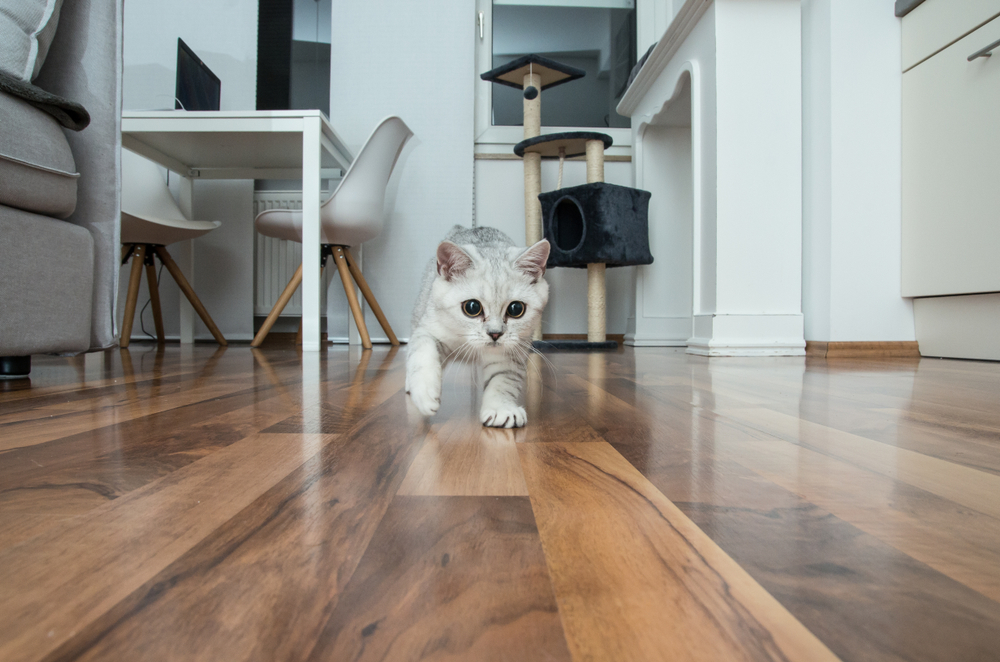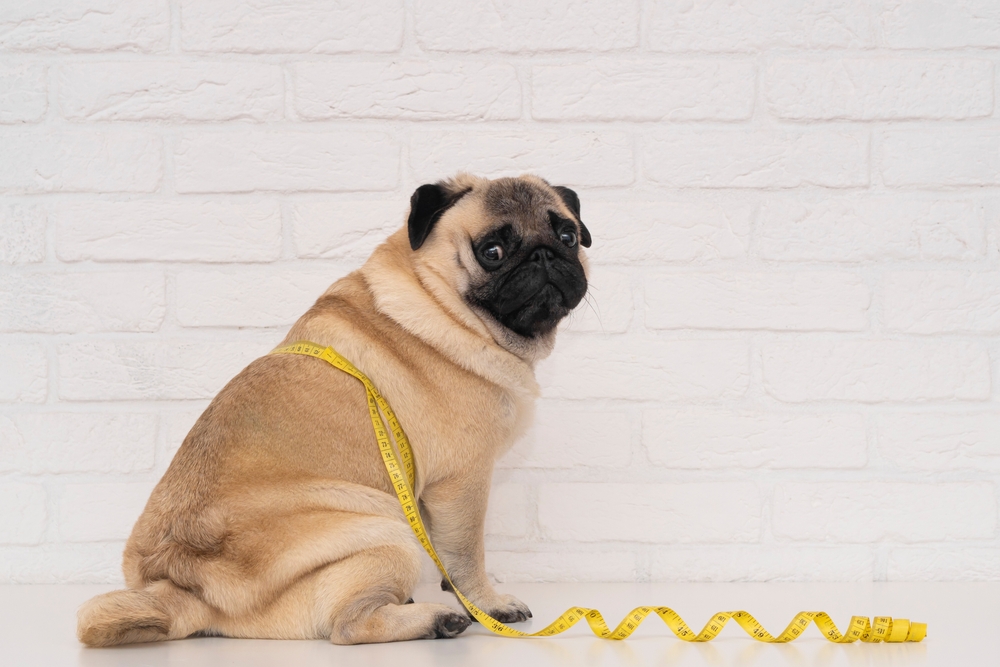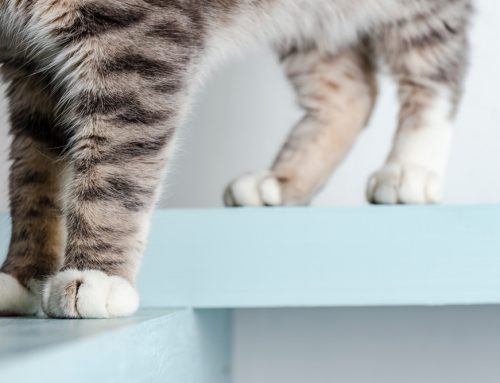According to the Association for Pet Obesity Prevention (APOP), veterinary care providers classify 59% of dogs and 61% of cats as being overweight or obese. Our Oak Creek Veterinary Care team wants you to understand that maintaining your four-legged friend at a healthy weight can add years to their life and help them remain energetic and playful. Read our pet weight management do’s and don’ts.
DO recognize the seriousness of pet obesity
Studies demonstrate that carrying excess adipose tissue (i.e., fat) can decrease a pet’s life span by an average of 2.5 years, and overweight pets tend to interact less with their families and are less energetic and playful. Being overweight also increases your pet’s risk for serious health issues.
Canine weight-related disorders include:
- Osteoarthritis
- Luxating patella (i.e., knee dislocation)
- Cranial cruciate ligament (CCL) disease
- Metabolic and endocrine disorders
- Respiratory disease
- Heart disease
- High blood pressure
- Kidney disease
- Chronic inflammation
- Many cancer types, especially intra-abdominal cancers
- Skin disease
Feline weight-related disorders include:
- Diabetes
- Kidney disease
- High blood pressure
- Urinary tract disease
- Osteoarthritis
- Cancer
- Hepatic lipidosis (i.e., severe liver disease)
DON’T assume your pet is at a healthy weight
Pet obesity’s prevalence has normalized the condition, and many pet owners don’t realize their pet is overweight. The best way to determine if your pet is at a healthy weight is to assess their body condition score (BCS). This is a subjective tool that uses a nine-point scale, in which a score of four to five is considered an ideal BCS. To assess your pet’s BCS, do the following:
- Palpate your pet’s ribs — Gently palpate your pet’s ribs. You should be able to feel their ribs without applying firm pressure. If your furry pal has a significant fat layer over their ribs, they are overweight.
- Observe your pet’s silhouette — Observe your pet from above. Their waist should be evident. If you can’t appreciate an inward curve behind their rib cage, your four-legged friend may need to lose a few pounds.
- Observe your pet from the side — Look at your pet from the side. Their abdomen should slant upward from their hind legs to their rib cage. If your four-legged friend’s tummy goes straight across or sags toward the ground, they may need to cut back on their treat intake.
DO schedule regular wellness checks for your pet
During your pet’s annual or biannual wellness checks, our team assesses and tracks your pet’s weight so we can provide advice to keep them at a healthy weight. In addition, during these routine examinations, we can detect medical conditions, such as hypothyroidism and Cushing’s disease, that may inhibit your pet’s ability to maintain a healthy weight.
DON’T put your pet on a diet
If your pet is overweight, seek veterinary advice before putting them on a diet. Suddenly restricting your four-legged friend’s calories can result in serious health complications such as malnutrition or hepatic lipidosis. Schedule an appointment with our Oak Creek Veterinary Care team, so we can accurately evaluate your pet’s weight status and devise a safe weight loss strategy specifically tailored to their needs.
DO calculate your pet’s calorie requirements
Your pet’s daily calorie requirements depend on multiple factors, including their breed, age, weight, activity level, and spay or neuter status. Use an online pet calorie calculator to determine the amount of calories your furry pal should eat per day.
DON’T free-feed your pet
Free-feeding your pet promotes weight gain and can quickly lead to obesity. Once you determine your pet’s daily calorie requirements, read their food label to ascertain the amount of food that is equivalent and divide this amount into two or three meal portions. In addition, when measuring your pet’s food, use a proper measuring device, such as a kitchen scale, to quantify their meal portion accurately and ensure they aren’t getting too much or too little. Consider that even one or two extra kibble pieces may amount to significantly extra calories for your cat or small-breed dog.
DO use a food-puzzle toy to feed your pet
Many pets are bored during mealtimes, and they may eat too quickly, especially if they face competition from other household pets. Using a food-puzzle toy to feed your pet is a great way to make dining more intriguing and also helps prevent food bolting, which can lead to issues such as gastrointestinal (GI) upset and bloat.
DON’T forget to exercise your pet

Daily exercise is an important part of your pet’s weight management strategy. While some pets, such as Australian shepherds and Labrador retrievers, need more exercise than others, all pets need at least 30 minutes of exertion every day. Exercise suggestions include:
- Walking — Take your pet for a walk, setting a brisk pace to elevate their heart rate. If your pet is a couch potato, start with short walks and gradually increase the exercise duration and intensity.
- Swimming — Swimming is a great low-impact activity, and is especially beneficial for arthritic pets to alleviate joint strain.
- Pursuit toys — Cats love a good hunt, and pursuit toys, such as flirt poles and laser pointers, are a great way to encourage your cat to get in a sufficient amount of steps for the day.
- Fetch — Fetch is an excellent way to keep your pet active and engaged.
DO limit your pet’s treats
Treats should constitute no more than 10% of your pet’s daily caloric intake. Avoid giving your pet high-fat treats, and offer healthy options such as baby carrots, green beans, blueberries, and cucumbers.
If you would like to have your pet’s weight assessed, contact our Oak Creek Veterinary Care team, and we will devise a safe weight loss program if they are carrying a few extra pounds.







Leave A Comment